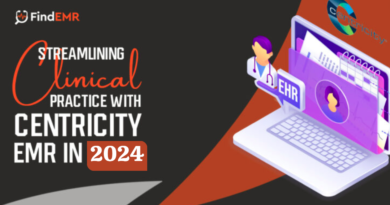Beginner’s Guide to DevSecOps in Software Projects
Continuous Integration and Continuous Deployment (CI/CD) is now a standard to develop and deploy applications to the production. It makes the process integrated and measurable giving a 360-degree view of the development process. But while it speeds up the software development, it also brings challenges when putting the code to production. This velocity and volume of code bring a new challenge for the security professionals: how to test the code and approve the build for release in the fast-paced process.
A security assessment cannot be delayed until the release phase. This is because if a critical security loophole appears, it might disrupt the whole deployment schedule. Delaying till the end also leaves only a small room to check the assessment. It should also be noted, as mentioned in this Forbes article, security threats are increasing day by day and there is also a short of professionals in this field
So how to overcome it? Security experts suggest testing the repository of code during the development stages. This is called DevSecOps. The DevSecOps is a bridge between Developments and Operations. The DevSecOps is implemented by the DevSecOps tools which we will be looking at later in this post.
DevSecOps offers a good principle to test the code during the development process and eliminates the need to wait until the final stages. DevSecOps ensures that the final application cannot be easily exploited. But this also needs to have a proper thought process and strong integration into the DevOps process.
Automating the Process
To automate the whole process, DevSecOps requires that the whole software development process be automated by making use of a security threat database. The DevSecOps stresses an iterative way to perform security checks during the whole coding process. With each commit, a security check is performed, and the build is weighed against the security threats. This whole process happens in the cloud such as Azure or AWS but can be configured on some local server as well. Comprehensive threat reports and analytics can help the project team to find, investigate, fix and test the security threats again.
Now that we know what is DevSecOps and how it is aligned with the whole software development process, now tell us to see the benefits we get by applying this approach and whether its benefits outweigh its cost or not.
Benefits of Implementing DevSecOps
- With the implementation of DevSecOps in your software development, the time needed to resolve security threats greatly decreases. This is because the security analysis is performed throughout the software development process, so security issues can be foreseen and resolved well before time.
- DevSecOps also removes the burden on the security personnel for the testing of the code and the need to hire cyber security experts. Because we perform security checks from the initial stages of development, security assessment is broken down into smaller pieces.
- Because the security threats are resolved on the go, we can have faster deployments. This means that the users can have the final product free from security vulnerabilities in lesser than ever time, resulting in more value delivered in a shorter time.
- Finally having the security protocols in place since the beginning can help in auditing the whole process at any time. Your software team can provide itself for the audit whenever it is needed.
Now that we know the benefits of the DevSecOps, let’s look at the tools we can use to implement the DevSecOps in our project.
Tools You Need for DevSecOps
IriusRisk
IriusRisk is a popular tool that provides a single point of entry in the system. You can easily build threat models in this software and manage application risks throughout the software development process. IriusRisk also provides a way to enforce standardized solutions to security threats.
IriusRisk can generate the security models quickly, analyze and recognize the threats to the product, allow close collaboration between the security and development teams.
Mezmo
Mezmo is known to provide real-time intelligence from your log data. And thus giving a solution to logging data through a well-managed logging process and implementing effective logging reinforces that resulted to continuous integration, continuous delivery, and continuous employment.
It also has a comprehensive platform that makes observability data consumable and actionable.
Logz.Io
Logs.io boasts to be the end-to-end cloud monitoring solution. It provides unified logs, metrics, and trace analytics so that real-time information can be provided. The more quickly you get the information the swifter action you can take against the security vulnerabilities. It supports all the popular tech stacks.
It also comes with dashboards, real-time alerts about important critical events, and centralized data. Logz.io also comes with the AI/ML to automatically find and troubleshoot errors.
AppSpider
AppSpider is another tool in our list that can help implement DevSecOps. It boasts “Leave no app untested and no risk unknown”. It can find the vulnerabilities in web applications. It can interpret new technologies that are now being used to build modern web applications. AppSpider also offers a single point control, automation for web application security paradigm. Finally using AppSpider you can fix the security vulnerabilities within no time.

